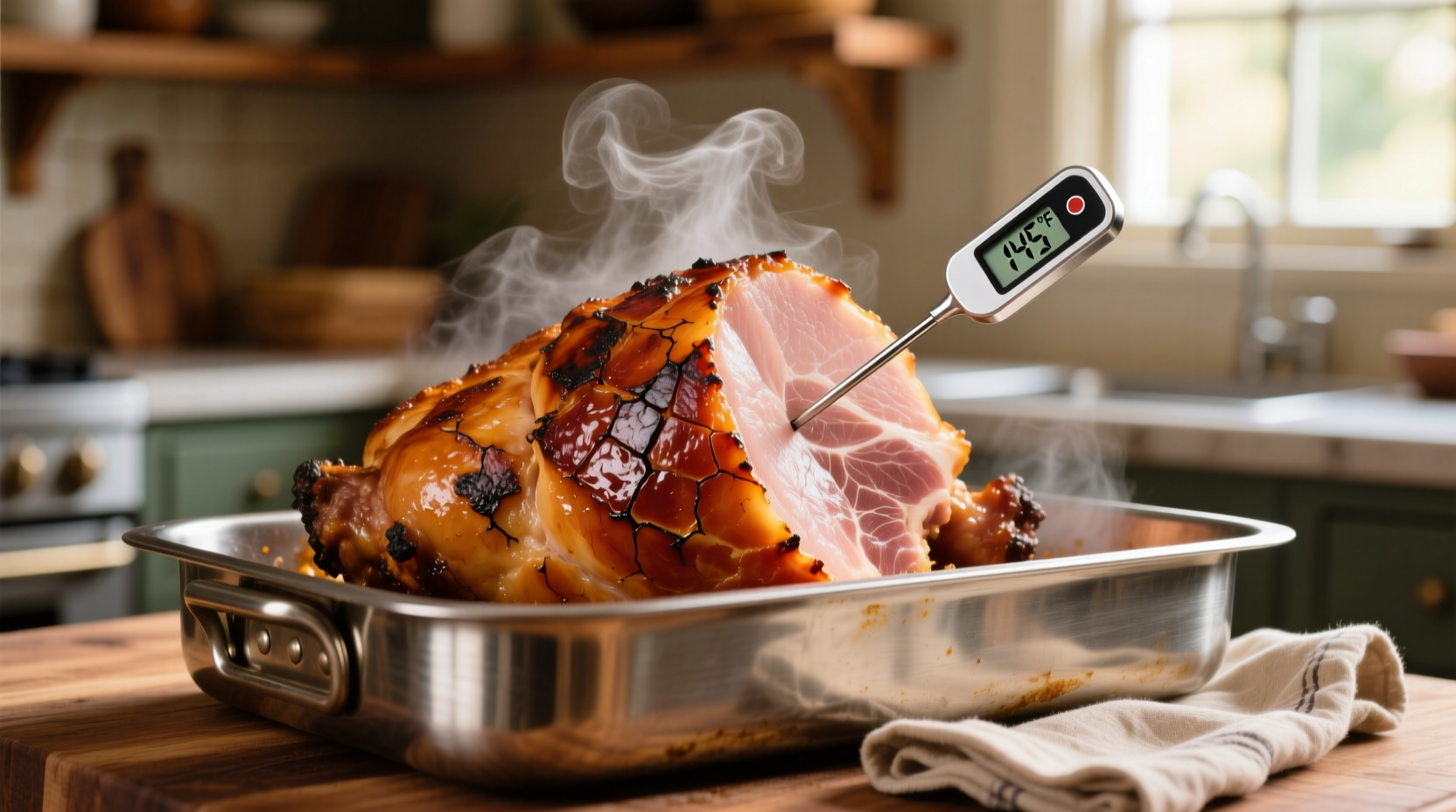Preheat your oven to 325°F (163°C), place the fully cooked ham cut-side down in a roasting pan with 1–2 inches of liquid, and heat until the internal temperature reaches 140°F (60°C)—typically 10–15 minutes per pound. This foolproof method ensures moist, flavorful ham every time without drying out the meat.
Planning your holiday meal? Knowing how to prepare a fully cooked ham properly can transform your centerpiece from dry disappointment to juicy perfection. As a chef who's prepared hundreds of holiday hams, I'll show you the exact techniques professionals use to achieve consistently moist results while avoiding common pitfalls that ruin expensive cuts.
Understanding Your Fully Cooked Ham
Before you start, confirm your ham is truly fully cooked. Check the packaging for phrases like "ready to eat," "heat-and-serve," or "fully cooked." These hams have already been cured, smoked, and cooked to safe temperatures during processing. Never confuse them with "cook-before-eating" hams, which require thorough cooking to 145°F (63°C).
Most fully cooked hams come in three styles:
- Whole hams (10–15 lbs) - Best for large gatherings
- Half hams (5–7 lbs) - Ideal for families of 4–8
- Spiral-cut hams - Convenient but dries faster during heating
Essential Prep Work: Thawing and Equipment
If frozen, allow 24–48 hours for thawing in your refrigerator (5–7 hours per pound). Never thaw at room temperature. For best results, use these tools:
- Oven-safe meat thermometer (critical for accuracy)
- Rimmed roasting pan with rack
- Aluminum foil
- Basting brush
| Cooking Method | Time Per Pound | Best For | Moisture Retention |
|---|---|---|---|
| Oven (standard) | 10–15 minutes | All ham types | ★★★☆☆ |
| Oven (with broth) | 12–18 minutes | Dry-prone cuts | ★★★★☆ |
| Slow cooker | 20–25 minutes | Spiral-cut hams | ★★★★★ |
Source: National Pork Board's Ham Cooking Guide (2024)
Step-by-Step Heating Process
Follow these professional steps for perfect results:
1. Prepare the Ham
Remove packaging and any small plastic disks covering bone ends. Place ham cut-side down in roasting pan. For spiral-cut hams, keep the provided glaze packet but don't apply yet. Pour 1–2 inches of liquid (apple juice, broth, or water) into the pan bottom—this creates steam to prevent drying.
2. Cover and Heat
Cover tightly with heavy-duty aluminum foil to trap moisture. Insert meat thermometer into the thickest part, avoiding bone. Heat at 325°F (163°C) until internal temperature reaches 140°F (60°C). This USDA-recommended temperature ensures food safety while preventing overcooking.

3. Glaze Application (Optional)
During the last 20–30 minutes, remove foil and apply your glaze. Popular combinations include:
- Brown sugar, Dijon mustard, and pineapple juice
- Maple syrup, cloves, and orange zest
- Honey, apple cider vinegar, and smoked paprika
Apply every 10 minutes, allowing each layer to caramelize slightly before adding more.
Avoiding Common Mistakes
Even experienced cooks make these errors when preparing fully cooked ham:
- Overheating - Exceeding 140°F dries out the meat (USDA Food Safety and Inspection Service confirms 140°F is safe for pre-cooked ham)
- Skipping the rest period - Let ham rest 15–20 minutes before slicing to redistribute juices
- Glazing too early - Sugar burns at high temperatures, creating bitter flavors
- Cutting against the grain - Always slice perpendicular to muscle fibers for tender pieces
Serving and Storage Tips
Serve ham at 130–140°F for optimal flavor and texture. Leftovers keep refrigerated for 3–4 days or frozen for 1–2 months. For best reheating results, wrap slices in foil with a splash of broth and warm at 275°F until heated through.
Pro tip: Save the ham bone for flavoring soups and beans—simmer with vegetables for 1–2 hours to extract maximum flavor.
Troubleshooting Guide
Encountering issues? Try these fixes:
- Dry ham - Baste with warmed broth during final heating phase
- Bland flavor - Score surface and insert garlic slivers before heating
- Soggy glaze - Increase oven temperature to 400°F for final 5 minutes
- Uneven heating - Rotate pan 180 degrees halfway through cooking
Advanced Techniques for Gourmet Results
For special occasions, elevate your fully cooked ham preparation with these chef-approved methods:
- Reverse sear method - Heat gently to 130°F, then finish under broiler for 2–3 minutes
- Smoke infusion - Add wood chips to roasting pan for subtle smokiness
- Compound butter - Mix softened butter with herbs and slide under skin before heating
Remember that different ham varieties require slight adjustments. City hams (wet-cured) need less liquid than country hams (dry-cured), which benefit from extra moisture during heating.
Food Safety Essentials
Always follow these safety guidelines when preparing fully cooked ham:
- Never leave ham at room temperature more than 2 hours
- Use separate cutting boards for raw and cooked meats
- Clean thermometers with hot, soapy water between uses
- Refrigerate leftovers within 2 hours of serving
The USDA Food Safety and Inspection Service confirms that reheating fully cooked ham to 140°F is sufficient for safety, as the initial processing already eliminated pathogens. This lower temperature threshold compared to raw meats (145°F) prevents unnecessary moisture loss in pre-cooked products.











 浙公网安备
33010002000092号
浙公网安备
33010002000092号 浙B2-20120091-4
浙B2-20120091-4